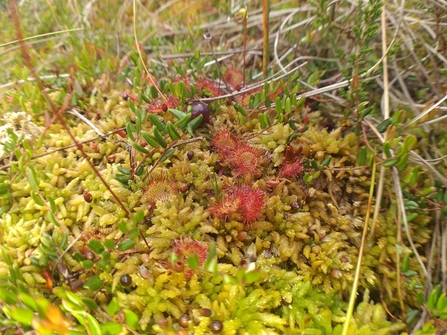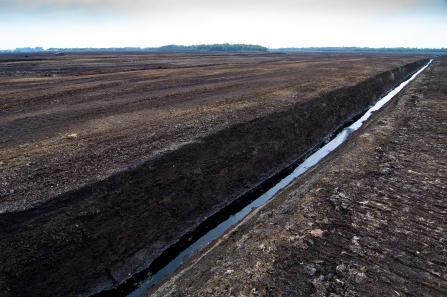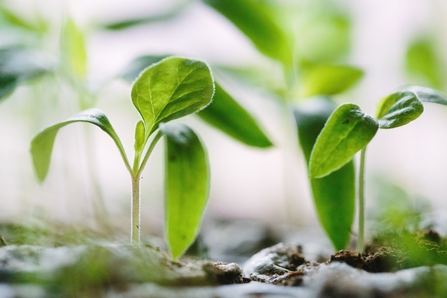When I first started working for your Wildlife Trust I went to visit Winmarleigh Moss SSSI, one of our region’s best surviving examples of a lowland raised peat bog. I was utterly captivated by it; the sweeping vista, the amazing plants and animals harmoniously co-existing around our feet, and that wonderful bouncy, squelch as I walked across it.
What's hiding in your plant pots?
The devastation of peat extraction on Little Woolden Moss in Manchester

Winmarleigh Moss is home to rare and specialised bog plants including round-leaved sundew and sphagnum mosses
And then I went to Little Woolden Moss. Gone were greens, the browns, and the occasional jewel tones of the rare and specialised peatland plants. Gone were the insects, the birds, and the lolloping brown hares. In its place, a bleak, black wasteland of desiccated earth. This was the result of peat extraction for horticulture.

The devastation of peat extraction on Little Woolden Moss in Manchester
Currently nearly 3 million cubic metres of peat are sold for horticultural use in the UK, that’s enough to fill 1,200 thousand Olympic sized swimming pools – every year.
Clearly this has to stop. But what can you do?
Going peat-free in your garden is one of the easiest and most important ways that you can help our environment. Simply choosing peat-free compost instead of a bag whose contents have contributed to peatland devastation and climate change, is such an easy win. Especially when you consider that many of the new peat-free formulations have been shown to outperform their peat-based counterparts in testing.
But is that as far as the story goes?
Peat is actually used for far more than just filling bags of compost. For example, many of the plants that you buy to create your own garden wilderness will have been grown in peat-based compost, meaning that the wildlife friendly habitat that you are creating in your garden will have contributed to the destruction of a peatland.
However, there is an increasing number of dedicated peat-free nurseries popping up, many of which, if they aren’t around the corner from you, offer online ordering and delivery – just Google peat-free plants and have a browse. It is also worth checking the small print, as a number of suppliers are actually peat-free but just don’t shout about it. For example, all of B&Q’s own brand bedding plants are peat-free.
But what about those plants that live indoors with us? There is currently a limited selection of peat-free houseplant suppliers online, but do check out harrietsplants.co.uk. Or why not save the environment and a little money at the same time and propagate your own? Succulents and spider plants take to this particularly well.
Peat can even be found lurking in your kitchen too. Many of those pots of living herbs and salads from the supermarket, that brighten up so many of our meals, will also have been grown in a peat-based compost. But there is a simple solution here – grow your own. A few seeds and sunny windowsill can provide you with a living banquet, or check out kitchengardenplantcentre.co.uk.

And finally, you may have come across compost claiming to contain ‘Responsibly Produced Peat’ – there is no such thing. Unless your compost is expressly labelled as peat-free, its production has contributed to the destruction of a precious habitat and contributed to climate change.
Join our #PeatFree campaign and share your peat-free tips and successes with us on social media. And please also consider signing our petition to ban sales of peat, and adding your name to the growing number of people who are taking a peat-free stand for our environment.


